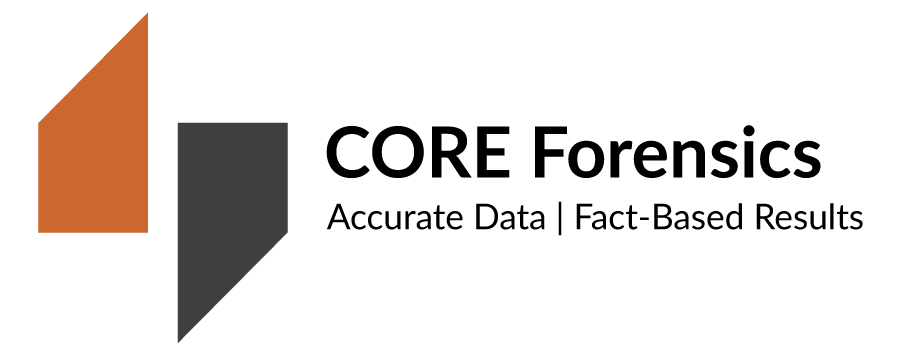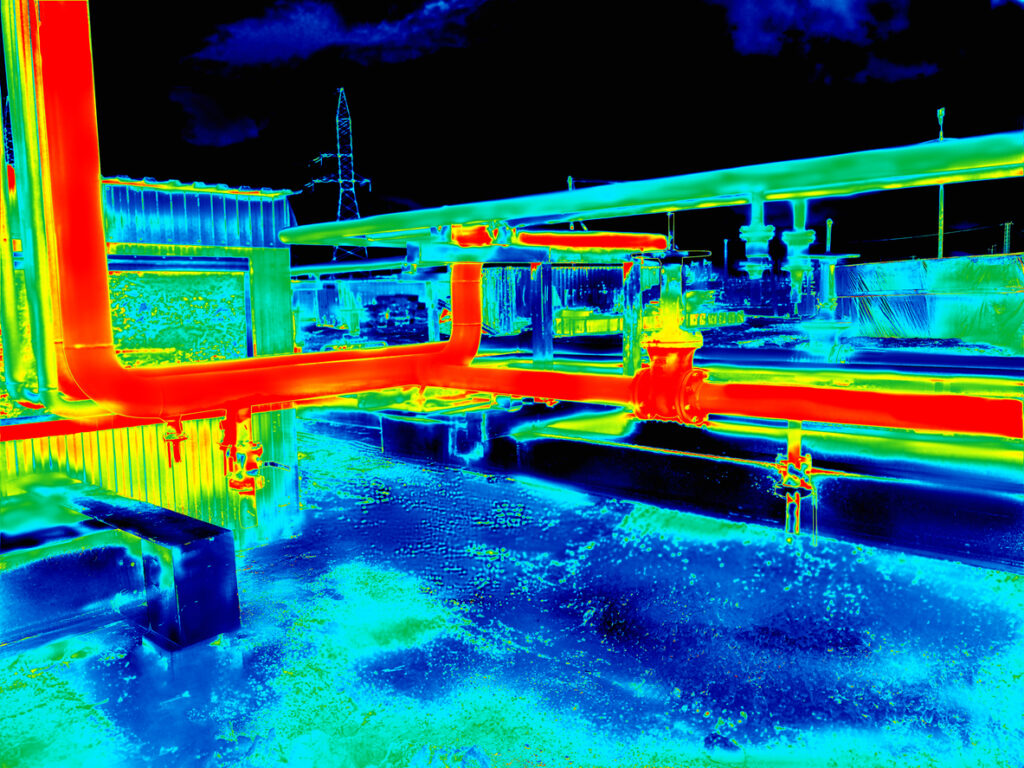Infrared imaging, also known as thermography, is a non-invasive technology that detects and visualizes thermal energy emitted from an object. It operates within the infrared spectrum of light, which is invisible to the human eye. In the context of commercial roof inspections, this technology plays a pivotal role in identifying hidden issues that might not be apparent through visual inspections alone.
This blog will explore the pivotal role infrared imaging plays in elevating the scope of commercial roof inspections. Prepare to delve deep into the workings of this cutting-edge technology, as we unravel its advantages and
How Infrared Imaging Works
Infrared radiation is a form of electromagnetic radiation that exists just beyond the visible spectrum. All objects emit infrared energy as a function of their temperature. Warmer objects emit more intense infrared radiation, while cooler objects emit less. Infrared cameras are equipped with sensors that can detect this thermal energy, converting it into a visible image that displays temperature variations across a surface.
Infrared imaging relies on the principle that different materials and conditions emit and retain heat differently. This technology excels at highlighting thermal contrasts and temperature differences, making it an invaluable tool for identifying areas of concern on a commercial roof. For instance, it can detect anomalies like moisture intrusion, insulation defects, and potential weak points that might not be visible to the naked eye.
Thermographic cameras, or infrared cameras, are specially designed to capture images based on the thermal radiation emitted by objects. They feature high-resolution sensors that can detect minute temperature variations. These cameras render these variations in a visual format, with different colors representing different temperatures. This allows inspectors to quickly and accurately identify areas of interest during a roof inspection.
Applications in Commercial Roof Inspections
Detecting moisture intrusion early is crucial for preventing extensive damage. Left unaddressed, moisture can lead to rot, mold growth, and structural deterioration. Infrared imaging excels at identifying subtle temperature differences that indicate areas of potential moisture intrusion.
Moisture can seep into roofing systems and remain hidden from plain sight. Infrared imaging allows inspectors to visualize these hidden pockets of moisture, providing a comprehensive understanding of the extent of the issue. This level of detail is invaluable for making informed decisions about necessary repairs.
Efficient insulation and roofing systems are critical for maintaining a comfortable indoor environment and reducing energy costs. Infrared imaging can identify areas of heat loss, allowing for targeted improvements to insulation and roofing materials.
An effective roofing system should have insulation that performs optimally. Infrared imaging enables inspectors to evaluate the insulation’s efficiency, ensuring that it meets industry standards and provides the necessary protection against temperature fluctuations.
Advantages of Infrared Imaging
Infrared imaging presents a series of distinct advantages in the realm of commercial roof inspections, making it a powerful tool for property owners and facility managers alike.
One of its paramount benefits lies in its non-invasive and non-destructive nature. Unlike traditional inspection methods that may require physical probing or material removal, infrared imaging preserves the integrity of roofing materials. This means that the inspection process itself does not contribute to any potential damage. Moreover, it significantly minimizes disruptions to daily operations within the building. Traditional inspections can be time-consuming and often necessitate extensive preparations. Infrared imaging, however, offers a swift and efficient alternative, allowing inspections to be carried out seamlessly without causing interruptions.
Furthermore, the technology offers comprehensive and accurate assessments. It excels at identifying hidden issues that might not be apparent through visual inspections alone. By capturing thermal anomalies and temperature variations, infrared imaging provides a deeper understanding of potential problems, enabling inspectors to address them before they escalate. The high-resolution images generated by infrared cameras furnish a wealth of data for detailed analysis. This rich information empowers inspectors and property owners to make informed decisions about necessary repairs or maintenance measures.
In terms of cost-effectiveness, infrared imaging proves to be a strategic investment. By detecting issues in their early stages, it prevents minor problems from evolving into major, costly repairs. This proactive approach can lead to significant savings for property owners in the long run. Additionally, regular infrared inspections contribute to the longevity of roofing systems. By promptly addressing potential issues, property owners can extend the lifespan of their roofs, reducing the need for premature replacements and the associated expenses.
Combining Infrared Imaging with Other Inspection Methods
While infrared imaging is a powerful tool in commercial roof inspections, its effectiveness can be further enhanced when integrated with complementary techniques. This combination not only amplifies the accuracy of assessments but also provides a more comprehensive understanding of the roof’s condition. By utilizing a multi-dimensional approach, inspectors can ensure that no potential issue goes unnoticed, addressing both surface-level concerns and deeper, hidden vulnerabilities.
Visual inspections are a fundamental component of any comprehensive roof assessment. They provide immediate, on-the-surface insights into the condition of roofing materials. When coupled with infrared imaging, visual inspections can help corroborate findings and offer a multi-dimensional view of the roof’s health. This synergistic approach ensures that no potential issue goes unnoticed, as both technologies complement each other’s strengths.
While infrared imaging excels at surface-level assessments, there are instances where a deeper analysis is necessary. Core sampling involves extracting small sections of roofing material for laboratory testing. This provides an in-depth understanding of the material’s composition, structural integrity, and potential weaknesses. When integrated with infrared imaging, core sampling forms a comprehensive evaluation strategy. Together, they offer both a macroscopic and microscopic view of the roof, leaving no room for hidden issues to persist.
Integrating infrared imaging with other inspection methods maximizes the accuracy and reliability of the assessment process. Each technique contributes unique insights, creating a holistic understanding of the roof’s condition. This collaborative approach minimizes the likelihood of oversight or misinterpretation. By combining these methods, inspectors can confidently provide property owners with a comprehensive and accurate report, empowering them to make informed decisions about necessary repairs or maintenance measures. Additionally, this thorough approach offers an extra layer of assurance, demonstrating a commitment to preserving the integrity and longevity of the roofing system.
Elevate Your Roof Inspections
Incorporating infrared imaging into your commercial roof inspections can be a game-changer, offering unparalleled precision and depth of analysis. With CORE Forensics, you have a trusted partner at your side, equipped with cutting-edge technology and a team of skilled experts. Together, we can uncover hidden vulnerabilities, prevent costly repairs, and extend the lifespan of your roofing system.
Don’t wait until issues escalate. Take the proactive step towards robust roof maintenance by partnering with CORE Forensics. Contact us today to schedule a comprehensive inspection and experience the transformative power of infrared imaging in safeguarding your commercial property. Elevate your roof inspections with CORE Forensics and ensure the longevity and resilience of your roofing system for years to come.

